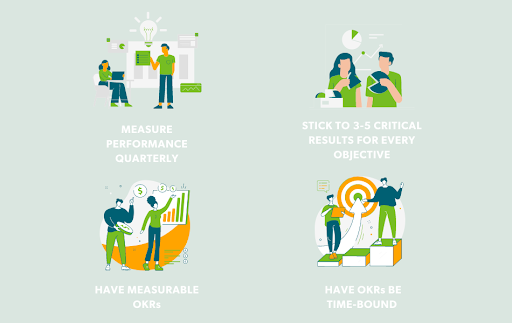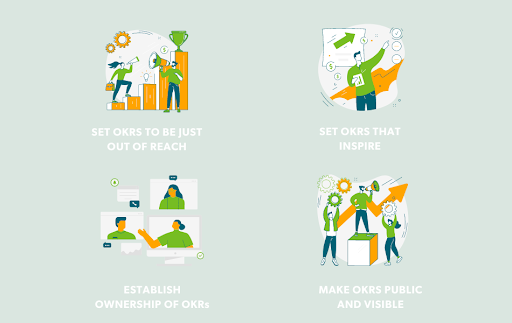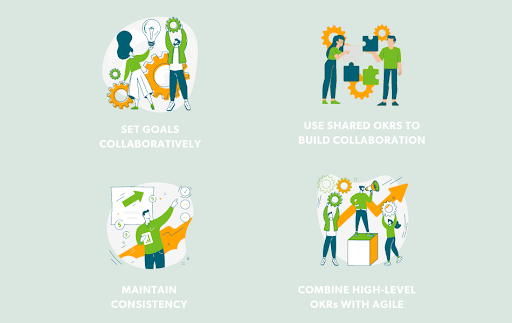-
- marketing agility
- Teams
- Organizations
- Education
- enterprise
- Articles
- Individuals
- Transformation
- Solution
- Leadership
- Getting Started
- business agility
- agile management
- going agile
- Frameworks
- agile mindset
- Agile Marketing Tools
- agile marketing journey
- organizational alignment
- Agile Marketers
- People
- Selection
- (Featured Posts)
- strategy
- agile journey
- Metrics and Data
- Kanban
- Resources
- Why Agile Marketing
- agile project management
- self-managing team
- Meetings
- Scrum
- agile adoption
- scaled agile marketing
- tactics
- scaled agile
- AI
- Agile Meetings
- agile marketing training
- agile takeaways
- Agile Leadership
- agile coach
- enterprise marketing agility
- Scrumban
- state of agile marketing
- team empowerment
- Intermediate
- agile marketing mindset
- agile marketing planning
- agile plan
- Individual
- Team
- Videos
- agile marketing
- kanban board
- Agile Marketing Terms
- agile transformation
- traditional marketing
- FAQ
- agile teams
- Agile Marketing Glossary
- CoE
- Scrumban
- agile
- agile marketer
- agile marketing case study
- agile marketing coaching
- agile marketing leaders
- agile marketing methodologies
- agile marketing metrics
- agile pilot
- agile sales
- agile team
- agile work breakdown
- cycle time
- employee satisfaction
- marketing value stream
- marketing-analytics
- remote teams
- sprints
- throughput
- work breakdown structure
- News
- agile brand
- agile marketing books
- agile marketing pilot
- agile marketing transformation
- agile review process
- agile team charter
- cost of delay
- hybrid framework
- pdca
- remote working
- scrum master
- stable agile teams
- stand ups
- startups
- team charter
- team morale
- user story
- value stream mapping
- visual workflow

Established in the middle of the 1980s, the objectives and key results (OKRs) framework was developed as an antithesis to conventional goal-setting frameworks. Based on management by objective principles, Andy Grove at Intel and Gary Kennedy at Oracle led the creation of this framework that is still, decades later, the darling of many of the world's top businesses like LinkedIn and Google. Organizations and teams swear by the method and wouldn't trade their OKR system for any other goal-setting strategy.
What is it about OKRs that has created such passion?
How are some organizations managing to get the most out of their teams while some struggle?
The answers lie in practice. How OKRs are implemented demonstrates a larger truth about how organizations can approach their daily initiatives through the lens of high-level business goals. There are plenty of best practices for any process – from procurement to customer targeting – and OKRs are no different. Establishing the OKR structure across the organization in a clear, consistent way increases the likelihood of adoption, compliance, and understanding.
When combined with Agile frameworks for execution, OKRs can become particularly effective.
Research by BetterWorks shows that organizations with formal goal-setting processes are 3.5X more likely to perform among the top quartile in their industries. That said, it's easy to go overboard and set too many OKRs – in reality, employees and teams can only focus on 3-5 goals at a time (Google identifies 3 to 6 critical goals at all levels per quarter).
Every OKR has to be a bit challenging to accomplish. Having dozens of these goals will soon get in the way of the team, leading to burnout and unfulfilled results. We've collected a few time-tested practices for getting the most out of OKRs in an Agile environment.

1. Measure Performance Quarterly
OKRs should reflect the overall business mission of the organization, from company-level OKRs to individual ones. Setting OKRs per quarter provides enough time to make a dent in ambitious goals or even fulfill them entirely.
Meanwhile, Agile short-term planning can be used to execute those broader goals through smaller projects or initiatives. In this setup, OKRs ensure that Agile work is driving towards a larger goal while the Agile work ensures those big goals get broken down into smaller, more actionable assignments. Quarterly OKRs are reviewed at the end of the quarter and the outcomes of these sessions culminates in an annual review to ensure all quarterly OKRs are in alignment with long-term vision for the organization.
2. Measurable OKRs
Setting quantifiable key results helps teams and managers measure OKR progress. A clear goal they can measure their output against helps team members stay focused on the leading indicators they can observe directly to validate their direction.
Key results that can be measured make objectives more concrete and help team members raise alerts if they notice they are not on track to deliver on the objective close to the end of the quarter.
3. Establish 3-5 Key Results for Every Objective
The number of key results that indicate, in greater granularity, how an objective can be achieved should be kept to a minimum in order to create focus. If an objective is broken down into more than 3-5 key results, there is a risk of overburden and confusion as teams struggle to work towards too many goals at once.
For each organization, departmental and team level objective, guiding key results help the team understand which leading indicators will influence the lagging indicator that is tied to the larger objective.
4. Bind OKRs to Time
When quarterly and annual OKRs are finalized, precise end dates by which the desired results must be achieved should be identified. This catalyzes the urgency to complete campaigns geared towards achieving the OKRs as well as the impetus to ask for help if required.
No matter the completion percentage of the OKR, it is scrapped at the end of the quarterly cycle, and the learnings are used to develop a new OKR based on the current priority order.

5. Make OKRs Challenging
The role of OKRs is to challenge; they should be demanding but attainable. Making OKRs just out of reach means team members are striving for achievement and looking for new, creative ways to drive towards progress.
In the OKR framework, even achieving 70% of the OKR is considered a success. Team and department leads have a role to play in guiding the work process towards 100% achieving of the outlined OKRs but should also consider ways to ensure their team members are not disheartened by not reaching 100% of the goal.
6. Set OKRs that Inspire
As organizations set bigger and bigger goals, they also need to inspire employees to reach them.
A successful vision and mission is an excellent first step, and actions that back up those words follow closely behind. Team members who feel like their daily work is supporting a larger purpose or mission will be more inclined to contribute and go out of their way to make things happen.
With the clear and achievable milestones that OKRs provide, organizations can inspire their team members to achieve great things as a unit.
7. Establish Ownership of OKRs
If there is no owner accountable for an OKR, the likelihood of it getting dropped throughout the quarter becomes exponentially higher than if a responsible party was identified when the goal was set.
OKRs on the individual level OKRs are the responsibility of individual team members. Department heads or leads own the OKRs set on the department level for the quarter. The management team, including the CEO, are responsible for organizational-level OKRs.
In this way, everyone in the organization has a role in the OKR framework and there is a steel thread between individuals on teams, to department leaders, all the way to the C-suite.
8. Make OKRs Accessible
Companies with the highest success rate keep their OKRs in an accessible place for peer and manager reviews.
By making quarterly OKRs available in their entirety in a tool like a company knowledge base, teams and leaders have visibility into the bigger picture and how they plug into it on an organizational level.
Specialized process management tools, like Jira for example, can provide visibility into several layers of OKRs all at once without being distracting.

9. Set Goals Collaboratively
Organizations that plan together, succeed together. When doers, strategists and their stakeholders participate in the goal-setting process, they are more invested in the process of achievement.
Hosting quarterly sessions to discuss and identify appropriate OKRs on all levels should be part of your organizational calendar.
10. Use Shared OKRs to Build Collaboration
When we consider the role of ownership in OKR success, it might seem that sharing OKRs just doesn't make sense. However, shared OKRs between teams instigates greater collaboration and communication between these groups that might reap unexpected rewards.
For example, if web development and UX share OKRs, they are more likely to work in alignment with each other because they are connected by the way they evaluate success.
On the individual level as well, team members can set their OKRs and invite other individuals on the team to join in.
11. Maintain Consistency
At the end of every quarterly OKR review, OKR owners are responsible for evaluating the circumstances that helped them move towards achievement of the OKR and the factors that held them back.
These learnings can help teams create new objectives for and key results for the future quarterly cycle. This develops a consistent approach to projects and development that is based on an essential feedback loop and allows team members to weave in their new ideas and data into the next evolution of the OKR.
Combine High-Level OKRs with Agile
On a high level, OKRs follow a structure similar to Agile ways of working, with frequent built-in feedback loops and a work breakdown structure that mirrors the OKR cascade.
If the organization is using an Agile framework already for execution processes, then using the OKRs framework for goal setting can complement their Agile process well. You can also use systems like Portfolio Kanban to combine the two and ensure activities from the bottom up are working towards those OKRs.
Combining these two techniques creates a seamless connection between individuals, completing actionable deliverables on a daily basis, and leaders, who are defining strategic goals that have impact across teams and departments.
If you're already using one of the other, it's a small leap to a fully connected process from strategy to execution.
Topics discussed
Improve your Marketing Ops every week
Subscribe to our blog to get insights sent directly to your inbox.


